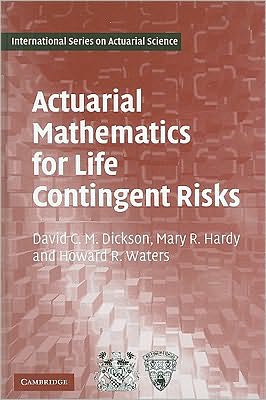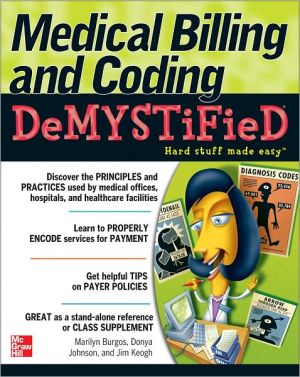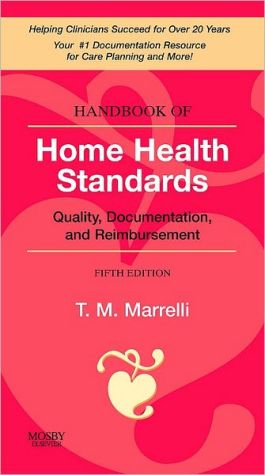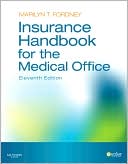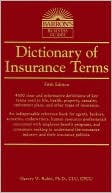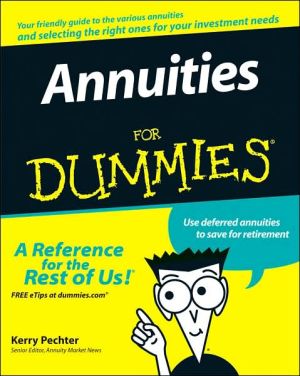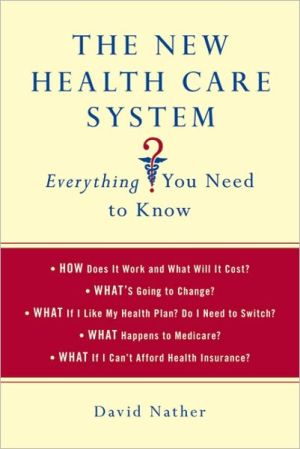Actuarial Mathematics for Life Contingent Risks
Selected as official reading for SOA Exam MLC in 2012: download free supplementary notes from the Resources tab below.\ How can actuaries equip themselves for the products and risk structures of the future? Using the powerful framework of multiple state models, three leaders in actuarial science give a modern perspective on life contingencies, and develop and demonstrate a theory that can be adapted to changing products and technologies. The book begins traditionally, covering actuarial...
Search in google:
How can actuaries equip themselves for the products and risk structures of the future? Using the powerful framework of multiple state models, three leaders in actuarial science give a modern perspective on life contingencies, and develop and demonstrate a theory that can be adapted to changing products and technologies. The book begins traditionally, covering actuarial models and theory, and emphasizing practical applications using computational techniques. The authors then develop a more contemporary outlook, introducing multiple state models, emerging cash flows and embedded options. Using spreadsheet-style software, the book presents large-scale, realistic examples. Over 150 exercises and solutions teach skills in simulation and projection through computational practice. Balancing rigor with intuition, and emphasizing applications, this text is ideal for university courses, but also for individuals preparing for professional actuarial exams and qualified actuaries wishing to freshen up their skills.
Preface xiv1 Introduction to life insurance 11.1 Summary 11.2 Background 11.3 Life insurance and annuity contracts 31.3.1 Introduction 31.3.2 Traditional insurance contracts 41.3.3 Modern insurance contracts 61.3.4 Distribution methods 81.3.5 Underwriting 81.3.6 Premiums 101.3.7 Life annuities 111.4 Other insurance contracts 121.5 Pension benefits 121.5.1 Defined benefit and defined contribution pensions 131.5.2 Defined benefit pension design 131.6 Mutual and proprietary insurers 141.7 Typical problems 141.8 Notes and further reading 151.9 Exercises 152 Survival models 172.1 Summary 172.2 The future lifetime random variable 172.3 The force of mortality 212.4 Actuarial notation 262.5 Mean and standard deviation of Tx 292.6 Curtate future lifetime 322.6.1 Kx and ex 322.6.2 The complete and curtate expected future lifetimes, ex and ex 342.7 Notes and further reading 352.8 Exercises 363 Life tables and selection 413.1 Summary 413.2 Life tables 413.3 Fractional age assumptions 443.3.1 Uniform distribution of deaths 443.3.2 Constant force of mortality 483.4 National life tables 493.5 Survival models for life insurance policyholders 523.6 Life insurance underwriting 543.7 Select and ultimate survival models 563.8 Notation and formulae for select survival models 583.9 Select life tables 593.10 Notes and further reading 673.11 Exercises 674 Insurance benefits 734.1 Summary 734.2 Introduction 734.3 Assumptions 744.4 Valuation of insurance benefits 754.4.1 Whole life insurance: the continuouscase, &Abar;x 754.4.2 Whole life insurance: the annual case, Ax 784.4.3 Whole life insurance: the 1 /mthly case, A(m)x 794.4.4 Recursions 814.4.5 Term insurance 864.4.6 Pure endowment 884.4.7 Endowment insurance 894.4.8 Deferred insurance benefits 914.5 Relating &Abar;x, Ax and A(m)x 934.5.1 Using the uniform distribution of deaths assumption 934.5.2 Using the claims acceleration approach 954.6 Variable insurance benefits 964.7 Functions for select lives 1014.8 Notes and further reading 1014.9 Exercises 1025 Annuities 1075.1 Summary 1075.2 Introduction 1075.3 Review of annuities-certain 1085.4 Annual life annuities 1085.4.1 Whole life annuity-due 1095.4.2 Term annuity-due 1125.4.3 Whole life immediate annuity 1135.4.4 Term immediate annuity 1145.5 Annuities payable continuously 1155.5.1 Whole life continuous annuity 1155.5.2 Term continuous annuity 1175.6 Annuities payable m times per year 1185.6.1 Introduction 1185.6.2 Life annuities payable m times a year 1195.6.3 Term annuities payable m times a year 1205.7 Comparison of annuities by payment frequency 1215.8 Deferred annuities 1235.9 Guaranteed annuities 1255.10 Increasing annuities 1275.10.1 Arithmetically increasing annuities 1275.10.2 Geometrically increasing annuities 1295.11 Evaluating annuity functions 1305.11.1 Recursions 1305.11.2 Applying the UDD assumption 1315.11.3 Woolhouse's formula 1325.12 Numerical illustrations 1355.13 Functions for select lives 1365.14 Notes and further reading 1375.15 Exercises 1376 Premium calculation 1426.1 Summary 1426.2 Preliminaries 1426.3 Assumptions 1436.4 The present value of future loss random variable 1456.5 The equivalence principle 1466.5.1 Net premiums 1466.6 Gross premium calculation 1506.7 Profit 1546.8 The portfolio percentile premium principle 1626.9 Extra risks 1656.9.1 Age rating 1656.9.2 Constant addition to μx 1656.9.3 Constant multiple of mortality rates 1676.10 Notes and further reading 1696.11 Exercises 1707 Policy values 1767.1 Summary 1767.2 Assumptions 1767.3 Policies with annual cash flows 1767.3.1 The future loss random variable 1767.3.2 Policy values for policies with annual cash flows 1827.3.3 Recursive formulae for policy values 1917.3.4 Annual profit 1967.3.5 Asset shares 2007.4 Policy values for policies with cash flows at discrete intervals other than annually 2037.4.1 Recursions 2047.4.2 Valuation between premium dates 2057.5 Policy values with continuous cash flows 2077.5.1 Thiele's differential equation 2077.5.2 Numerical solution of Thiele's differential equation 2117.6 Policy alterations 2137.7 Retrospective policy value 2197.8 Negative policy values 2207.9 Notes and further reading 2207.10 Exercises 2208 Multiple state models 2308.1 Summary 2308.2 Examples of multiple state models 2308.2.1 The alive-dead model 2308.2.2 Term insurance with increased benefit on accidental death 2328.2.3 The permanent disability model 2328.2.4 The disability income insurance model 2338.2.5 The joint life and last survivor model 2348.3 Assumptions and notation 2358.4 Formulae for probabilities 2398.4.1 Kolmogorov's forward equations 2428.5 Numerical evaluation of probabilities 2438.6 Premiums 2478.7 Policy values and Thiele's differential equation 2508.7.1 The disability income model 2518.7.2 Thiele's differential equation - the general case 2558.8 Multiple decrement models 2568.9 Joint life and last survivor benefits 2618.9.1 The model and assumptions 2618.9.2 Joint life and last survivor probabilities 2628.9.3 Joint life and last survivor annuity and insurance functions 2648.9.4 An important special case: independent survival models 2708.10 Transitions at specified ages 2748.11 Notes and further reading 2788.12 Exercises 2799 Pension mathematics 2909.1 Summary 2909.2 Introduction 2909.3 The salary scale function 2919.4 Setting the DC contribution 2949.5 The service table 2979.6 Valuation of benefits 3069.6.1 Final salary plans 3069.6.2 Career average earnings plans 3129.7 Funding plans 3149.8 Notes and further reading 3199.9 Exercises 31910 Interest rate risk 32610.1 Summary 32610.2 The yield curve 32610.3 Valuation of insurances and life annuities 330Replicating the cash flows of a traditional non-participating product 33210.4 Diversifiable and non-diversifiable risk 33410.4.1 Diversifiable mortality risk 33510.4.2 Non-diversifiable risk 33610.5 Monte Carlo simulation 34210.6 Notes and further reading 34810.7 Exercised 34811 Emerging costs for traditional life insurance 35311.1 Summary 35311.2 Profit testing for traditional life insurance 35311.2.1 The net cash flows for a policy 35311.2.2 Reserves 35511.3 Profit measures 35811.4 A further example of a profit test 36011.5 Notes and further reading 36911.6 Exercises 36912 Emerging costs for equity-linked insurance 37412.1 Summary 37412.2 Equity-linked insurance 37412.3 Deterministic profit testing for equity-linked insurance 37512.4 Stochastic profit testing 38412.5 Stochastic pricing 38812.6 Stochastic reserving 39012.6.1 Reserving for policies with non-diversifiable risk 39012.6.2 Quantile reserving 39112.6.3 CTE reserving 39312.6.4 Comments on reserving 39412.7 Notes and further reading 39512.8 Exercises 39513 Option pricing 40113.1 Summary 40113.2 Introduction 40113.3 The'no arbitrage'assumption 40213.4 Options 40313.5 The binomial option pricing model 40513.5.1 Assumptions 40513.5.2 Pricing over a single time period 40513.5.3 Pricing over two time periods 41013.5.4 Summary of the binomial model option pricing technique 41313.6 The Black-Scholes-Merton model 41413.6.1 The model 41413.6.2 The Black-Scholes-Merton option pricing formula 41613.7 Notes and further reading 42713.8 Exercises 42814 Embedded options 43114.1 Summary 43114.2 Introduction 43114.3 Guaranteed minimum maturity benefit 43314.3.1 Pricing 43314.3.2 Reserving 43614.4 Guaranteed minimum death benefit 43814.4.1 Pricing 43814.4.2 Reserving 44014.5 Pricing methods for embedded options 44414.6 Risk management 44714.7 Emerging costs 44914.8 Notes and further reading 45714.9 Exercises 458A Probability theory 464A.1 Probability distributions 464A.1.l Binomial distribution 464A.1.2 Uniform distribution 464A.1.3 Normal distribution 465A.1.4 Lognormal distribution 466A.2 The central limit theorem 469A.3 Functions of a random variable 469A.3.1 Discrete random variables 470A.3.2 Continuous random variables 470A.3.3 Mixed random variables 471A.4 Conditional expectation and conditional variance 472A.5 Notes and further reading 473B Numerical techniques 474B.1 Numerical integration 474B.1.1 The trapezium rule 474B.1.2 Repeated Simpson's rule 476B.1.3 Integrals over an infinite interval 477B.2 Woolhouse's formula 478B.3 Notes and further reading 479C Simulation 480C.1 The inverse transform method 480C.2 Simulation from a normal distribution 481C.2.1 The Box-Muller method 482C.2.2 The polar method 482C.3 Notes and further reading 482References 483Author index 487Index 488
\ From the PublisherEndorsement Official reading for SOA Exam MLC in 2012: download free supplementary notes from the Resources tab below\ \
